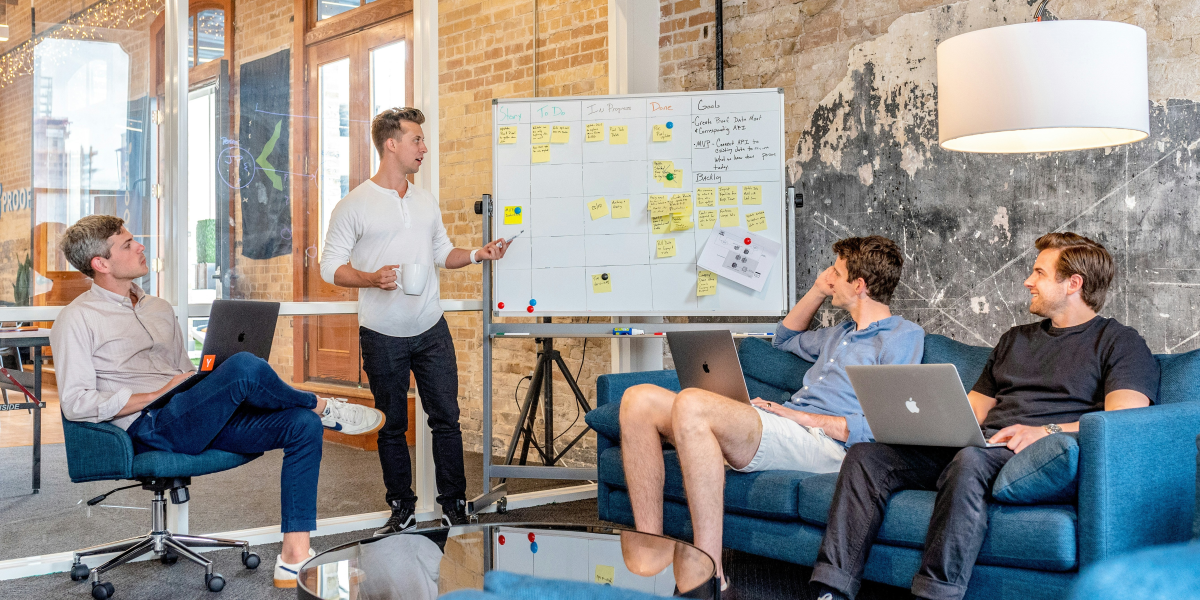By: Valliappan Narayanan, Senior Engineering Manager at Walmart
With the average lifespan of contemporary skills at just five years, how do we stay ahead in a constantly evolving workforce? The prominence of continuous learning and skill development has never been more critical, especially with the unpredictable trajectory of Artificial Intelligence (AI). According to an IBM study, a staggering 40% of workers will need to reskill within the next three years due to the pervasive influence of AI. Skill development is emerging as a burgeoning market sector, yet in this AI-dominated era, predicting the longevity and relevance of a particular skill is a challenge. OpenAI’s report accentuates that AI has already begun reshaping numerous job roles. Consequently, individuals must prioritize refining skills pertinent to both their current and prospective professions.
Employers, recognizing the shifting dynamics, are increasingly valuing skill enhancement. Notably, industry giants like Amazon have set a benchmark, wherein new recruits are expected to surpass the skill set of their existing workforce. Leveraging AI can supercharge one’s skill development process. AI’s adeptness in tailoring instructions, offering pinpointed assistance, and rendering timely feedback significantly bolsters outcomes, including improved knowledge retention, augmented skill proficiency, and optimized team performance.
- The average lifespan of contemporary skills is only about five years, emphasizing the need for ongoing learning.
- The World Economic Forum predicts a 15% increase in demand for skilled labor by 2025, potentially leading to a shortage of skills.
- Burning Glass Technologies’ report reveals that individuals with sought-after skills can earn around 25% more than their less-skilled peers.
- Research from the Society for Human Resource Management shows that 60% of trained employees achieve promotions within a year.
- The National Association of Colleges and Employers survey indicates that 72% of employers prefer candidates who have undergone training or development.
- In today’s dynamic job market, skill enhancement is not just advantageous but essential.
How does one stay relevant in such a rapidly changing environment?
Identify skill gaps: Often, individuals remain unaware of their deficiencies, aspirations, and potential due to the demands of daily life. AI provides a solution by offering deep insights. Harnessing vast data from myriad users and their respective career trajectories, AI models undergo rigorous training. These insights enable the creation of personalized plans and learning pathways tailored to an individual’s current proficiency level. AI can meticulously monitor employee performance, pinpointing areas that might benefit from additional training or development. By identifying these skill gaps, AI ensures that productivity isn’t compromised, and employees can realize their maximum potential. Moreover, AI’s capability to spot emerging skills positions it as a vital tool for futureproofing. It empowers employees to strategize their career trajectory effectively, ensuring they continually evolve their skill set to stay ahead in a dynamic professional landscape.
Create Learning Paths and Insights: “The learning journey is tailored to your unique pace, preferences, and goals. AI doesn’t just show you the path; it molds the path to fit you perfectly.” By ensuring that learners engage only with the most pertinent content, their learning becomes both effective and time-efficient. Using insights garnered from prior learners and their progress, AI crafts the most optimized learning journey for each individual. These bespoke plans consider various elements, from the learner’s current proficiency and learning pace to their unique style and end goals. This customization fosters deeper learner engagement, fueling their drive to succeed.
“AI’s ability to generate tailored content is transforming education. It’s like having an expert tutor creating materials just for you, enhancing the entire learning experience.” – Mark Taylor, EdTech Entrepreneur
Moreover, AI’s capability to provide instantaneous feedback and assess performance is a game-changer. It equips learners to fine-tune their strategies continually, leveraging AI-derived insights for peak learning outcomes. Beyond merely tracking progress, AI also pinpoints areas requiring extra attention. Such insights facilitate timely adjustments to the learning pathway, ensuring that each learner remains aligned with their aspirations, thereby maximizing the impact of their educational endeavors.
Generate content: Content development, with its meticulous and intricate nature, often proves to be a protracted and labor-intensive endeavor. While an array of manual tools exists to aid this process, curating an engaging course remains a herculean task. Enter AI, which harnesses expansive text corpora to seamlessly generate diverse content types, from FAQs to micro-courses, tailored for swift and effective learning.
AI is becoming a partner in creating engaging learning materials. It’s like unraveling the secrets of knowledge, as you enjoy the process, just like opening a mystery. A predominant AI application in this domain is the synthesis of Q&A segments that follow a course, providing learners with immediate avenues to clarify and consolidate their understanding. Moreover, AI can craft flashcards derived from the foundational course material, offering learners a concise and focused revision tool. In essence, AI not only streamlines the content development process but also enhances its pedagogical efficacy.
Multilingual capabilities: Additionally, AI’s prowess in handling multiple languages unlocks a universe of opportunities, effortlessly bridging linguistic divides. This ensures that users can delve into educational materials in the comfort of their native language. With the removal of these language constraints, learners gain unhindered access to a vast repository of knowledge, sidestepping the traditional hurdles of manual content translation. Such capabilities are particularly beneficial for global or geographically dispersed teams, as they can seamlessly engage with learning content in their mother tongue, fostering inclusivity and enhancing comprehension across diverse demographics.
Feedback and Engaging: AI stands at the forefront of enhancing the learning experience by continually assimilating feedback and leveraging insights from past user interactions. This dynamic approach determines which strategies most effectively foster skill development. With its capacity to provide instantaneous feedback and modulate the learning tempo in response to a learner’s progress, AI ensures a vibrant and immersive educational journey. Users can even refine the AI’s recommendations by specifying criteria, including user ratings, course difficulty, the mode of instruction, duration, and beyond.
Several platforms incorporate chatbots, which function akin to learning co-pilots or tutors, assisting users by addressing questions during their educational voyage. AI’s analytical capabilities offer deep dives into learner behavior and performance metrics. Such data becomes instrumental in elevating the overall learning experience. Moreover, AI monitors learner engagement with content, pinpointing both lackluster materials and highlighting areas for content refinement.
“AI’s real-time feedback mechanism transforms learning into a dynamic experience. It paces itself according to the learner’s progress, ensuring a personalized and immersive educational journey.”
— Prof. Alex Johnson, Learning Science Specialist
Furthermore, AI’s prowess extends to critiquing learner submissions, furnishing feedback that aids in honing their skills and comprehension. Such insights also spotlight regions where learners might require augmented support. With the integration of support chatbots, organizations can deliver prompt, round-the-clock responses to learner queries. This not only ensures swift resolutions and precise information based on AI-curated content but also alleviates the pressure on Learning & Development teams, heralding a new era of efficient and enhanced learning experiences.
Gamification: By integrating gamification, certain AI tools elevate the educational landscape, weaving in elements such as stars, points, and rewards to enhance learner engagement. This not only instills a feeling of accomplishment but also ignites an intrinsic motivation, compelling learners to revisit and persevere in their studies. The gamified framework creates a constructive feedback cycle, embedding a philosophy of perpetual growth and an insatiable quest for knowledge.
Here’s how gamification plays a pivotal role in sustaining learner enthusiasm:
Points and Badges: Serving as milestones, they document learner progression, acting as tangible tokens of their achievements. These rewards amplify their dedication and commitment.
Challenges and Quests: Crafting a narrative of purpose and goal-oriented tasks, they infuse a directional clarity, ensuring learners remain steadfast in their pursuit and realize their objectives.
Leaderboards: By juxtaposing learner achievements, leaderboards kindle a healthy competitive spirit, urging learners to continually refine their skills and excel.
Virtual Economies: By bestowing virtual assets or currencies upon learners as recognition of their efforts, these economies cultivate a sentiment of proprietorship and accomplishment.
Social Connectivity: By fostering interaction amongst peers, social features craft a communal learning ambiance. This interconnectedness promotes mutual growth, as learners derive insights from one another’s experiences and perspectives.
In essence, gamification, when woven with learning, not only makes the process enjoyable but also enhances retention, persistence, and collaboration, transforming the very essence of the educational journey.
In conclusion, as the contemporary professional landscape undergoes seismic shifts, propelled by the rapid evolution of technology and AI’s growing influence, the need for continuous learning and skill enhancement emerges as paramount. AI presents a revolutionary approach to addressing this need, offering personalized learning paths, dynamic content generation, multilingual support, real-time feedback mechanisms, and the appeal of gamification. The future of skill development and upskilling undoubtedly lies in harnessing the potential of AI. By intertwining AI’s capabilities with the pursuit of knowledge, we not only ensure that individuals remain competitive in their respective fields but also lay the foundation for a workforce that is adaptable, resilient, and ever-evolving. As we stand on the precipice of this transformative era, one must ponder: How can I embrace the power of AI-driven learning to future-proof my skills, effectively using AI as a catalyst for my own growth? Even in the age of automation and digitization, the unyielding human desire for growth and self-improvement remains unwavering.









